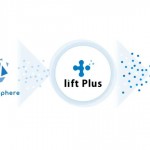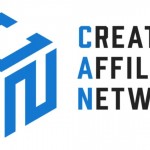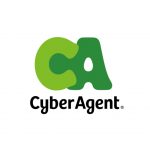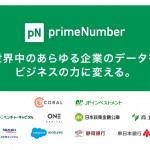Google Product Listing Adsは、検索広告の拡張であった、カニバリズムを起こすものではないであろう(英文)
 Less than six months since Google decided to merge its paid Product Listing Ads and its “free” shopping-related results into a single paid image-ad format, about 35% of commercial searches now show PLAs in the results, up from 29% in Oct, says Jefferies & Co.’s analyst Brian Pitz.
Less than six months since Google decided to merge its paid Product Listing Ads and its “free” shopping-related results into a single paid image-ad format, about 35% of commercial searches now show PLAs in the results, up from 29% in Oct, says Jefferies & Co.’s analyst Brian Pitz.
As Google Shopping now essentially requires retailers to buy PLAs – Jefferies tracks over 5,000 retailers running 125,000 ads, up from under 4,000 with 95,000 in October – we checked in with Will Margiloff, CEO of IgnitionOne, which was one of the first ad tech firms to partner with Google on its PLAs by featuring Google Shopping as part of its Digital Marketing Suite.
WILL MARGILOFF: Spending across that ad format in Google, where the equivalent would probably be a single digit spend last year, is in the 10 to 15% range of total search…flowing through Google PLAs. What’s interesting to me is that most of that is incremental. There doesn’t seem to be too much cannibalization of the existing search budgets, which is obviously the goal in any new product. So it has done the job of extending search ad revenue.
What’s driving that extension of search ad buys?
In general, the driver of PLAs is tied to the growing acceptance of e-commerce by marketers and consumers. People are becoming more familiar, and are feeling better about purchasing things online. The majority of it this is a space on the page that people were used to responding to and marketers were feeling the benefits of that without paying for it previously. The incremental spending is driven by the fact that the clicks were always there. The difference now is just that marketers have to pay for them.
The other interesting notion to go along with that, obviously, is the fact that while it’s paid, the CPCs marketers are paying is actually still considerably lower than what they’re paying at paid search. It’s not free, but it’s lower. That’s another reason why there are not a lot of cannibalization fears. And while costs are lower for clicks related to PLAs versus regular paid search, the conversion rates are pretty similar. So retailers are getting more bang for their buck with PLAs than they do with traditional search.
As a partner, what exactly is IgnitionOne’s role in Google’s PLA offering?
IgnitionOne allows the marketer to actually manage both PLA and their paid search, as well as their display advertising and social media ads all from a single platform. This is a way for a marketer to aggregate all the data around their campaign management and the conversion from those campaigns into a single stack. We are a facilitator, sitting in between the marketer and the inventory sources, helping them optimize their media — and one of those components is Google’s paid PLAs.
How much of a factor is mobile search marketing playing in the development of Google’s PLA regime?
We don’t have the specifics around mobile and the PLAs. Obviously, mobile as a percentage of total spend has been jumping tremendously. In terms of mobile search, like on the PC, spending is somewhere in the neighborhood of 15% of the total spent from again, low single digits a year ago. That’s massive expansion in terms of the coverage that mobile is taking from the PC.
Apart from working on Google’s PLAs, IgnitionOne is also a Facebook Exchange partner. Do you have any initial thoughts on what some implications that Facebook Graph Search would have on advertising and search advertising?
To start, Facebook hasn’t figured out how to monetize that yet. We’re looking at different ways to try and help marketers understand what the broad potential or that is. Graph Search is basically a great way to search people’s photos, places, interests and stuff like that. But it doesn’t index the broader web – at least for the time being. You still have to figure out how to marry monetization to very generic things. Specific places and interests have the opportunity to do that. User photos are more difficult, of course, and I think people might be a little wary, at first anyway.
Ultimately there are going to be opportunities around the overlap of users’ photos and interests with the broader web’s ability to pull in general places and interests. More specifically, the opportunities are going to be in local advertising, local recommendations, recruiting, dating; things that can be applied pretty easily against two of those four different main areas.
Is IgnitionOne doing anything new this year with the Facebook Exchange and Google’s PLAs? Any plans in the near term?
We are working very closely with Google and Facebook on a lot of different things. We’re working with Facebook on a number of things, particularly around engagement and other social metrics. We’re going to use Q1 and Q2 to continue to advance our lead on integrated ad stacks.
Marketers want more simplicity when it comes to managing all these various ad tools and systems. More and more, they’re just saying please give me an output that accomplishes my goal, that doesn’t force them to talk several different technologies, while trying to figure out how integrate them all. Our goal is to bring everything out there into a single platform.
What about your approach to managing data from a single system? Do you see yourselves as more of demand side platform with data management platform capabilities being built in?
We’ve had DSP built into our system. That’s already happening. I think the DMP question really is another one. Unlike other places, you have all your data from all your campaigns sitting in our system, and you can extract that data in any way you want. How you manage the individual users and the data behind it is something we could do. I’m not sure it’s up our alley in terms of the type of business that we are today. I think we surely have all the data that a marketer would need for a DMP, but we have yet to productize anything there because it takes you from optimizer to total analyzer and that’s a different kind of animal.
We’re already doing a lot of different things in a lot of markets, and I don’t know who the biggest DMP is, but I’m not sure that’s a market that we need to play in considering there’s probably 10 other guys that are doing it today.
from:http://www.adexchanger.com/platforms/ignitionones-margiloff-google-plas-are-extending-search-ad-spending-not-cannibalizing-it/











